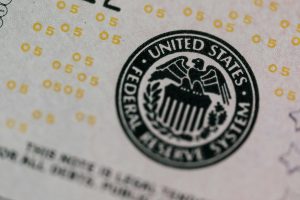The U.S. dollar has reigned supreme as the world’s reserve currency for nearly eight decades, a position cemented by the Bretton Woods Agreement in 1944 and sustained by America’s economic dominance, military might, and financial stability. However, cracks in this foundation are widening, and the dollar’s status as the global financial linchpin is increasingly under threat. Experts, including BlackRock CEO Larry Fink in his recent annual letter to investors, argue that this shift is not a question of “if” but “when.” The timeline for this seismic change may span the next decade—potentially by 2035—driven by mounting U.S. debt, geopolitical realignments, and the rise of digital alternatives like Bitcoin. Here’s why the dollar’s decline appears inevitable and what Fink’s warnings signal for the future.
Why the Dollar’s Fall Is Inevitable
The U.S. dollar’s reserve status hinges on global confidence in America’s economic stewardship. For decades, this confidence was bolstered by the dollar’s role in international trade, oil pricing (the “petrodollar” system), and the perceived safety of U.S. Treasuries. Today, however, several forces are eroding this trust.
First, the U.S. national debt, now exceeding $36 trillion, is growing at an unsustainable pace. Interest payments alone are projected to hit $952 billion in 2025, surpassing defense spending, and by 2030, mandatory spending and debt servicing could consume all federal revenue, leaving a permanent deficit. This fiscal recklessness undermines the dollar’s credibility, as foreign creditors question whether the U.S. can honor its obligations without resorting to inflation or devaluation.
Second, geopolitical shifts are accelerating de-dollarization efforts. The BRICS nations (Brazil, Russia, India, China, and South Africa) are actively reducing their reliance on the dollar, trading in local currencies and stockpiling gold. China, the world’s second-largest economy, is pushing its yuan as an alternative, while sanctions on Russia have prompted nations to seek dollar-independent systems to avoid U.S. financial leverage. These moves chip away at the dollar’s dominance in global reserves, which has already slipped from 72% in 2000 to about 59% today.
Third, technological disruption—namely blockchain and cryptocurrencies—offers a viable alternative. Bitcoin, with its decentralized nature and fixed supply, is gaining traction as a hedge against fiat currency instability. Unlike the dollar, it’s immune to political whims or central bank printing presses, making it an attractive “digital gold” for a world wary of U.S. economic mismanagement.
An Approximate Timeline: 2030–2035
Predicting the exact moment the dollar loses its crown is fraught with uncertainty, but a plausible timeline emerges from current trends. By 2030, the U.S. debt-to-GDP ratio could exceed 150%, a level that historically signals economic distress. If interest rates rise—spurred by inflation or waning foreign demand for Treasuries—debt servicing costs could spiral, forcing drastic measures like currency devaluation. Concurrently, BRICS and other blocs may expand alternative payment systems, reducing dollar-denominated trade by 20–30% within the decade.
The tipping point could arrive between 2030 and 2035, when a critical mass of central banks diversifies reserves into yuan, gold, or cryptocurrencies, dropping the dollar’s share below 50%. A major trigger—say, a U.S. default scare or a coordinated shift in oil pricing away from dollars—could hasten this to the early 2030s. While the dollar won’t vanish overnight, its reserve status could erode to a plurality rather than a monopoly by mid-next decade.
Larry Fink’s Warning: BlackRock’s Perspective
Larry Fink, CEO of BlackRock—the world’s largest asset manager with $11.6 trillion under management—sounded a stark alarm in his 2025 annual letter to investors. He warned that “if the U.S. doesn’t get its debt under control, if deficits keep ballooning, America risks losing that position [as the world’s reserve currency] to digital assets like Bitcoin.” Fink’s comments mark a notable evolution from his earlier focus on Bitcoin as an investment vehicle to a broader geopolitical threat to U.S. dominance.
Fink highlighted the U.S. debt’s growth—tripling the pace of GDP since 1989—and its implications: “By 2030, mandatory government spending and debt service will consume all federal revenue, creating a permanent deficit.” He juxtaposed this fiscal fragility with the rise of decentralized finance, noting that “two things can be true at once: Decentralized finance is an extraordinary innovation… yet that same innovation could undermine America’s economic advantage if investors begin seeing Bitcoin as a safer bet than the dollar.”
BlackRock’s actions underscore Fink’s conviction. The firm’s iShares Bitcoin Trust (IBIT), launched in 2024, has amassed over $50 billion in assets, reflecting surging demand—over half from retail investors, many new to BlackRock products. Fink also championed tokenization, predicting it could “revolutionize investing” by enabling instant, intermediary-free transactions, further hinting at a future where traditional currencies like the dollar lose primacy.
The Road Ahead
The dollar’s decline isn’t just a financial story—it’s a paradigm shift. As trust in U.S. fiscal policy wanes, alternatives will gain ground, whether state-backed currencies or decentralized assets. Fink’s warnings align with a growing consensus: the U.S. must act decisively to curb debt, or the world will find other anchors. By 2035, the dollar may still be a major player, but its days as the unchallenged king of global finance are numbered. Investors, policymakers, and citizens alike should brace for a multipolar monetary future—one where Bitcoin, not Uncle Sam, might call the shots.





Be First to Comment